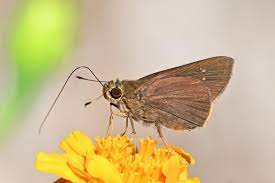
Rare “Paintbrush Swift Butterfly” discovered in Himachal Pradesh
Rare “Paintbrush Swift Butterfly” discovered in Himachal Pradesh
Important for Prelims:
Paintbrush Swift Butterfly, Jangli Bhattiyat Project, Lepidopterist Frederick Moore, Dhauladhar Mountain Range, Wildlife (Protection) Act, 1972 (Schedule IV) in India, Biodiversity
Important for Main Exam:
Projects run by the state for the conservation of various butterfly species, reasons for extinction, conservation status.
23 October 2023
In News:
- Recently, the Paintbrush Swift butterfly has been discovered, for the first time, by the State Forest Department in Chamba district of Himachal Pradesh.
- 120 species of butterflies have been documented by the Jangli Bhattiyat project launched by the state forest department in 2022.
- Uncommon species documented under this project include Anomalous Nawab, Blank Swift, Tailed Jay and Siren.
- Himachal Pradesh is currently home to 25% of the butterfly species found in India.
Paintbrush Swift Butterfly (Baoris farri)
About:
- Baoris farrii is a butterfly species in the family Hesperiidae, commonly known as the paintbrush swift.
- This species was discovered in the eastern Himalayas in 1878, but was never photographed before in Himachal Pradesh.
- This butterfly was first described by lepidopterist Frederick Moore in the eastern Himalayas 145 years ago.
- It is identified on the basis of two different locations in the upper forewing cell.
- Butterflies of this species eat bamboo and some other grass species as food.
Habitat:
- Its habitat is distributed in North-East, Central and South India, and is rare in Uttarakhand.
- This species of butterfly is seen on the lower hills of Dhauladhar mountain range.
- Dhauladhar mountain range extends in the states of Jammu and Kashmir and Himachal Pradesh. It is the main tourist destination of the middle or lesser Himalayas.
Causes for species decline:
- The major reasons for the decline in butterfly population are habitat loss, lack of larval host plants, increase in pesticide use, deforestation and climate change.
Conservation status:
- Presently this species of butterfly is legally protected in India under Schedule IV of the Wildlife (Protection) Act, 1972.
- This Act provides a legal framework for the conservation of various species of wild animals and plants, management of their habitats, regulation and control of trade in wild animals, plants and their products.
- The Act also lists the schedules of plants and animals that are provided with different levels of protection and monitoring by the government.
Efforts for conservation
- The discovery of the Paintbrush Swift in Himachal Pradesh underlines the importance of habitat conservation.
- Urgent conservation efforts are needed, including establishment of butterfly parks and conservation reserves, butterfly rearing or breeding centers and plantations of native host plant species.
- Conservation initiatives should focus on high-altitude butterfly species that face threats from habitat destruction, with their numbers having declined significantly in recent years.
- Creating awareness about the importance of butterflies through community participation is important for their conservation.
Source: T.H.
---------------------------------------
Mains Exam Question
Discuss the state-run project for conservation of various butterfly species, the reasons for their extinction and their conservation status.